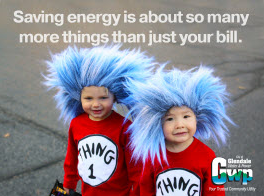This post was co-written by Catherine Ittner, Communications Intern, and Catherine Nisson, Clean Energy Research Intern.
The American Council for an Energy-Efficient Economy (ACEEE) recently released the second edition of its International Energy Efficiency Scorecard, ranking the energy efficiency efforts of the world’s 16 largest economies. The report assigns each country a score based on three primary sectors responsible for energy use: buildings, transportation, and industry. So where did the land of the free fall on the index? Disappointingly, the U.S. ranks number 13, ahead of only Russia, Brazil, and Mexico. The international champion for the second time this summer: Germany.
ACEEE concedes the demand for energy has been declining in the U.S. since 2007, and progress is most likely due to increasingly energy-efficient appliances and buildings, as well as the local and state policies that encourage their use. But, clearly, there is significant room for improvement and much of that may lie in behavioral changes and everyday tweaks people can make to conserve energy.
With recent energy efficiency initiatives going nowhere on Capitol Hill, another means of encouraging the efficient use of energy without legislation is to take the message straight to the people. Cue creative communications campaigns that can play a role in bumping the U.S. closer to the top of the International Energy Efficiency Scorecard.
Savvy communications can encourage energy conservation
Michigan Saves, a nonprofit dedicated to making energy improvements easy and affordable, created the campaign, Avoid Energy Drama, complete with public service announcements. For anyone that has engaged in a thermostat battle with a loved one or roommate, you know just how personal our energy choices can be. The clip below cleverly plays on the unnecessary drama inherent in energy use by portraying a couple as fighters in a boxing match. The campaign website also features helpful information about local energy efficiency resources based on zip code.
Similarly, the Department of Energy (DOE) and the U.S. Ad Council have joined together to create a number of campaigns directed at tweens with demonstrable success. Their most recent, EnergySaver.gov, has useful videos highlighting tips for saving money through common-sense energy conservation. After running several ads promoting unplugging electronics and switching to energy-saving light bulbs, survey results showed the tweens who had seen the ads were more likely to engage in these energy saving actions.
The Alliance to Save Energy also believes in educating young energy users as a way to instill long-term habits. Their most recent DOE-sponsored campaign is geared toward kids and features a somewhat grotesque villain named Boss Hogg, who loves to enter homes with his henchmen to waste energy. In person, the mascot visits schools to inform students about how “energy hogs” ultimately cost the rest of us hundreds of dollars. Targeting children could lead to greater overall household efficiency by indirectly educating parents as well.
Even utilities are starting to get in on the action. Home energy management start-up CEIVA Energy has partnered with various utilities to encourage energy-efficient behavior with digital photo frames. The frames display personal photos interspersed with energy data and conservation tips. Dean Schiller, CEO of CEIVA and former executive for Walt Disney, has led the organization to use humor and sentimentality to deliver Glendale Water & Power’s message.
These are only a few examples of existing, creative efforts to encourage more efficient energy use. Considering electricity powers nearly everything in our daily lives, it is important to encourage innovation in the way we discuss energy efficiency. Also, given our love of sharing funny clips and images (cue the hundreds of cat memes and Funny or Die videos), it’s worth noting humor may be key to capturing people’s attention and making energy efficiency go viral. By appealing to individuals’ funny bones, targeting energy consumers when they are young, and emphasizing people’s everyday ability to make smarter choices, communications campaigns could fill a critical gap to boost our nation’s International Energy Efficiency Scorecard ranking.
A little creativity could take the U.S. a long way, perhaps even to the top of the list.











